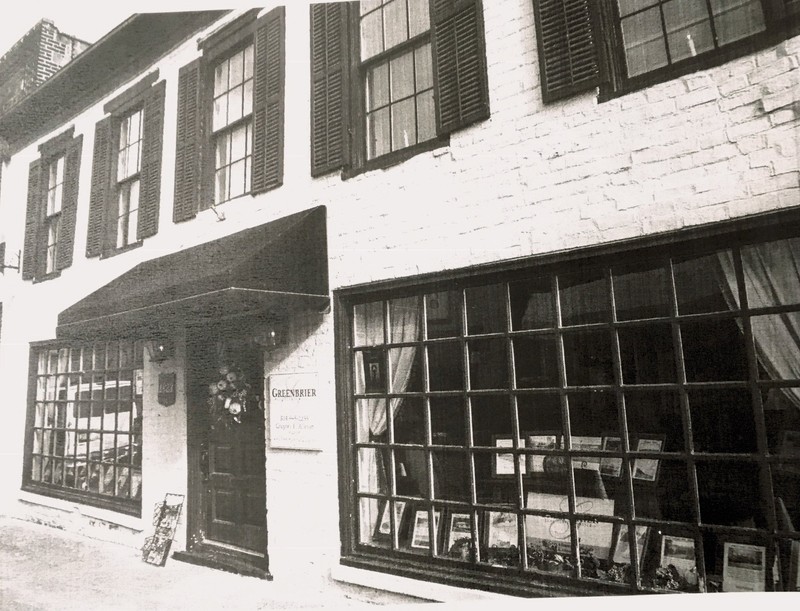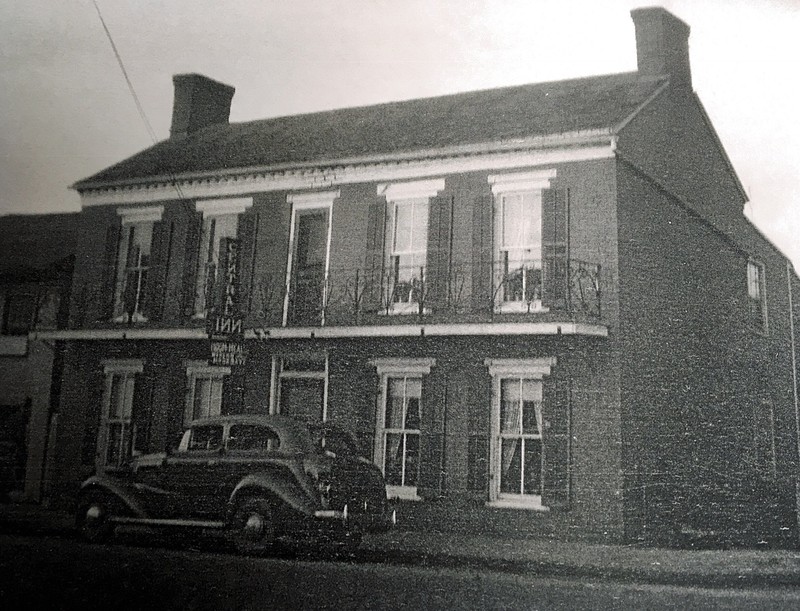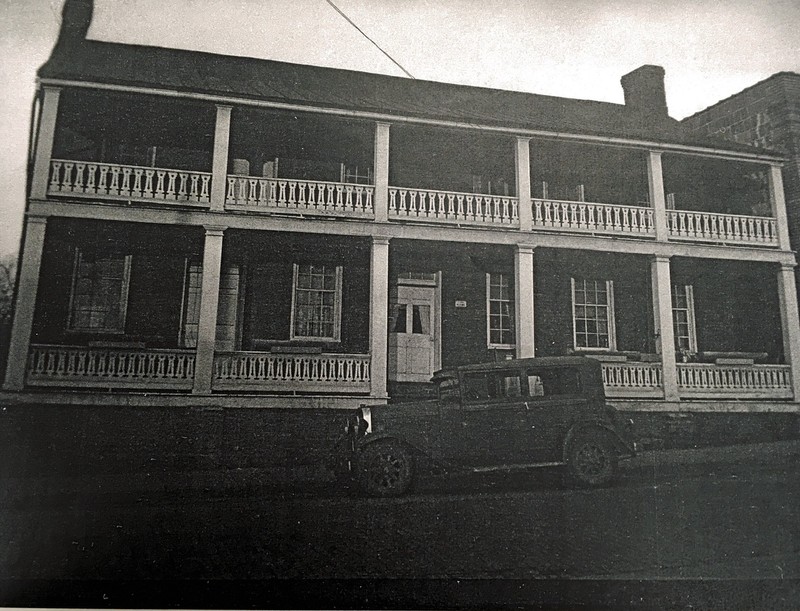Bell Tavern
Introduction
Text-to-speech Audio
This two-story painted brick building was the "western part" of The Bell Tavern that was thought to have been built before 1823 and has since been demolished. This building may have been built by John Weir, noted architect and brick mason. In addition to having been part of the adjacent tavern, it was a store house and was occupied by a saddle shop in 1879.
Images
Bell Tavern.

Central Inn showing the metal balcony. Photo courtesy of Greenbrier Historical Society.

East part of the Bell Tavern that was razed in 1959 for a Western Auto store. Photo courtesy of Greenbrier History Society.

Backstory and Context
Text-to-speech Audio
This building and the former adjacent building served as taverns for many years as The Bell Tavern, Old Bell Stand, Frazier's Tavern, Central Inn, Greenbrier House, and the Bivens Boarding House. On August 30, 1826, Henry Clay, Whig Party leader and U. S. Secretary of State, was warmly received by residents at a dinner in the tavern.
This building once had a second floor balcony with a wrought iron railing that was described by local historian Ruth Wood Dayton as "delicate in design." When it was removed it was one of the last attractive balconies along Washington Street.
The building is now occupied by Greenbrier Real Estate.
This building once had a second floor balcony with a wrought iron railing that was described by local historian Ruth Wood Dayton as "delicate in design." When it was removed it was one of the last attractive balconies along Washington Street.
The building is now occupied by Greenbrier Real Estate.
Cite This Entry
Skip Deegans on behalf of Lewisburg Historic Landmarks Commission. "Bell Tavern." Clio: Your Guide to History. February 20, 2019. Accessed April 27, 2025. https://theclio.com/tour/1596/13
Sources
Montgomery, John F. Come Walk With Me Through the Streets of Historic Lewisburg. Parsons, WV: McClain Printing Co., 1995.
Woods, Dayton Ruth. Lewisburg Landmarks. Charleston, WV: Education Foundation, Inc., 1957.
Woods, Dayton Ruth. Greenbrier Pioneers And Their Homes. Charleston, WV: West Virginia Publishing Company, 1942.
Woods, Dayton Ruth. Lewisburg Landmarks. Charleston, WV: Education Foundation, Inc., 1957.
Woods, Dayton Ruth. Greenbrier Pioneers And Their Homes. Charleston, WV: West Virginia Publishing Company, 1942.

